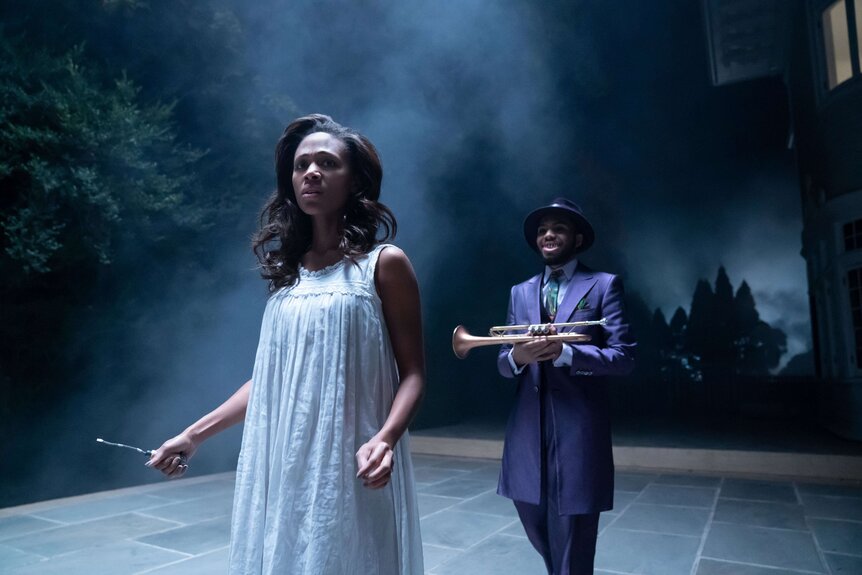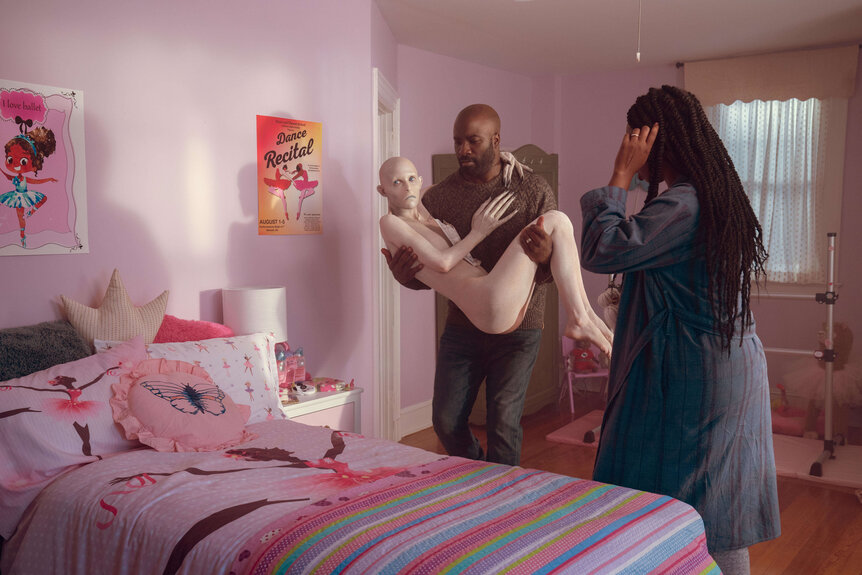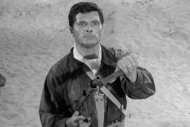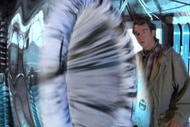Create a free profile to get unlimited access to exclusive videos, sweepstakes, and more!
How Hulu's Monsterland skirts the line between the beautiful and the horrific
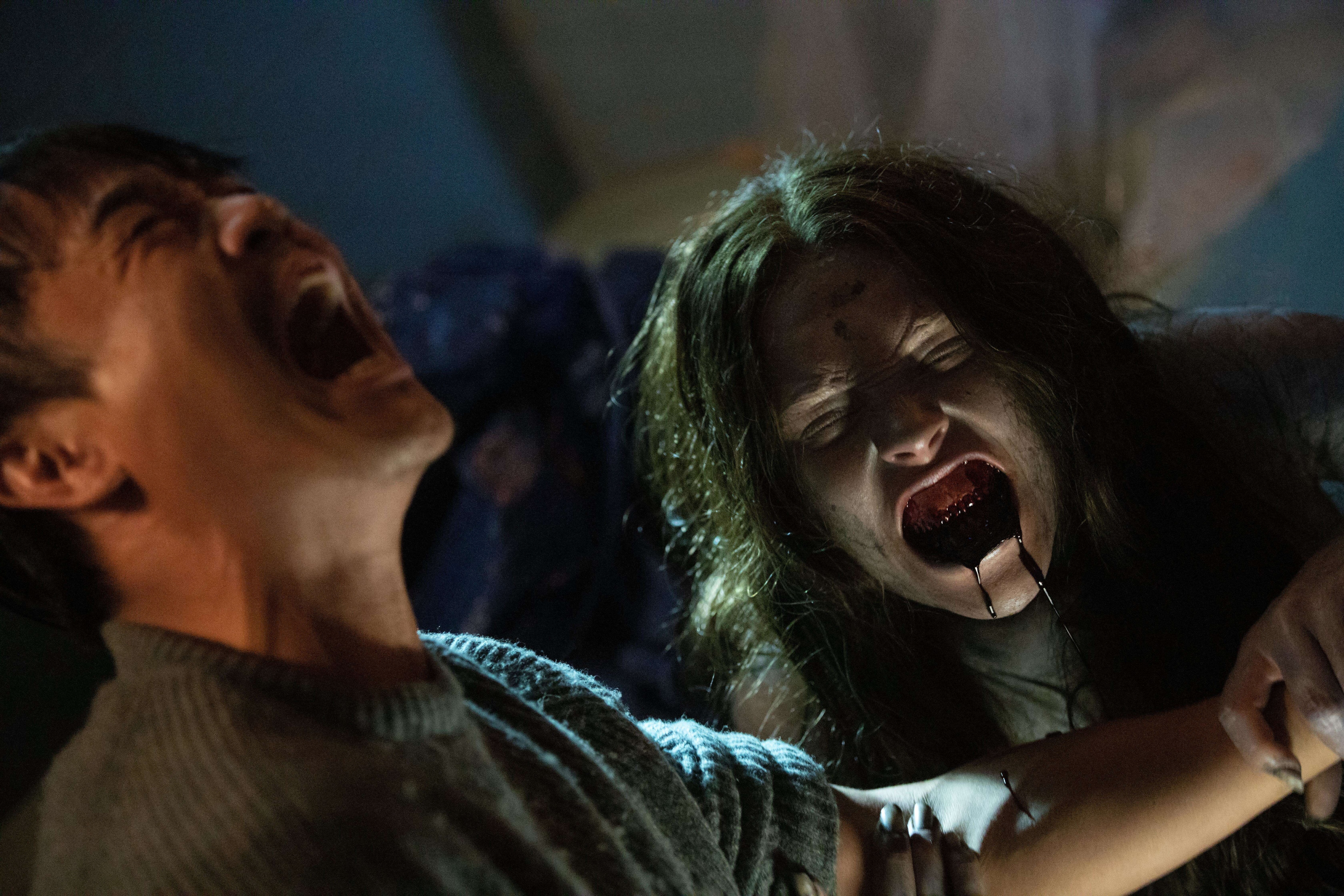
It’s October, which means the scaring can officially commence. If you’re into jump scares and gore, there are plenty of series and films to choose from. But if you’re looking for chilling stories that will dance a slow creep up your spinal column into your soul, Hulu’s anthology Monsterland fits that bill.
The eight-episode adaptation of author Nathan Ballingrud’s critically lauded, short story collection, North American Lake Monsters, is a series of mostly standalone “horror” stories that reveal the thin line between mythical and everyday monsters. Executive producer/showrunner Mary Laws initially came to the series via Ballingrud’s book, which she says immediately captured her imagination because of its subtle, grounded approach toward the moral complexity of its characters.
“[Nathan] writes about protagonists that normally wouldn't make the headlines,” Laws tells SYFY WIRE about her initial assessment of his book. “They wouldn't make it on screen because they're blue-collar people. They're teenagers that are lonely and misguided. They're really complex, complicated women who make a lot of bad choices. They're not your average Hollywood star or protagonist. And that's what I wanted to make space for."
Already well-versed in writing morally complex people for series like Succession and Preacher, Laws says Monsterland gave her a canvas to explore the “unlikely stories” of those who rarely get featured in the horror genre: the poor, immigrants, and the ethnically diverse.
“I grew up as a queer kid in a really conservative town to parents who didn't make a lot of money,” she says of her own youth. “I know what it feels like to feel “other” and to feel like you don't really have a place with a voice. And just how complicated it is to be a human without a lot of resources. Again, those are just the kinds of stories that I'm drawn to. And those are the kinds of stories that we, as a writing team, decided we were going to make the heart of Monsterland.”
Featuring a stellar lineup of actors, including Kaitlyn Dever (Booksmart), Mike Colter (Luke Cage), Kelly Marie Tran (Star Wars: The Last Jedi), Nicole Beharie (Sleepy Hollow), Hamish Linklater (Legion), and many others, the individual episodes focus on different protagonists living in disparate cities across the United States.
Laws says she staffed her small writer’s room with four other scribes, and Ballingrud. While there are nine individual stories in Nathan’s book, Laws said she wanted the freedom to craft original stories, and also flesh out some of the source works. Including Ballingrud in the mix allowed her to keep the old and new seamless. “Nathan writes with so much empathy for everyone in the story, even the people who should be ‘villains,’ so having his perspective when you were coming up with these new stories was really essential,” she says.
The rest of the room included playwright Emily Kaczmarek, and writers Scott Kosar (The Haunting of Hill House) and Wesley Strick (A Nightmare on Elm Street). And Laws even brought in first-time TV writer Aalia Brown. “She came in with such a point of view on the book and on the characters in the story,” Laws enthuses. “I was careful to choose writers who had a lot of great character work on their resume because at the heart of each of these stories, even though they are genre-based, they're really rooted in character. It's not a lot of cheap thrills and jump scares and stuff like that. I wanted people who wanted to really dig into what it is to be human, and what it is to be a complicated human who makes a lot of really complicated and sometimes destructive choices.”
“I came in with tons of ideas,” Laws says of their early days in the room. “But slowly, I threw them all out the window one by one when I realized everyone else had even more extravagantly better ideas than me. As a horror fan myself, there was so much fun in saying, ‘What can we make a monster that wouldn't actually be a monster?’ Because the people are monstrous in all of the episodes. Hopefully, there will be some conversation about who was more monstrous: the people or the actual monsters.”
Laws says it was always a mandate to make each of the stories feel “really urgent and really present” to what's going on in today’s national discourse (pandemic aside). “I don't particularly like issue-based drama, so we always try to find a way in through the back door. Our 'New York, New York' episode, for instance, watching it develop through post, every time I watched it, I thought, ‘Oh my God, we're closer and closer to this moment than I even thought we were when we were creating it.’”
She continues, “And there is an episode about sexual assault, but we tell it through the perspective of the mother, which is a perspective I don't think you would normally think about.”
For those who have read North American Lake Monsters, they will immediately recognize that the opening episode, "Port Fourchon, LA," is a similar take on the story that opens the book, “You Go Where It Takes You.” Laws says that particular story, in her mind, was always going to serve as the pilot.
“Probably of all the stories, I feel like I might have a more personal connection to that one,” she shares. “It's the one I read and said, ‘OK, I want to do this series." It stars Devers as Toni, a poor, waitress and single-mother in Louisiana. Her daughter has major behavioral problems that open the door for a desperate encounter.
Laws says Toni’s story spoke to her own past of being a young woman asking herself, “‘How am I going to get out of [here] and start a new life for myself? How am I going to escape the traumas of my past, start over and become stronger and have this new other life that I always thought was not possible for me?’ I really thought that that was a complicated story about womanhood that I don't see told enough.”
“I loved that story from the beginning,” Laws continues. “And it really felt like the world that we were creating [for the series] because it was so grounded and so authentic. But then it had these really supernatural and strange elements to it that are so carefully woven into it all that when they reveal themselves to you, it's astonishing. And that's really how I wanted all of the episodes to work.”
As for the overall look of Monsterland, Laws says she brought in director Babak Anvari (Under the Shadow) to help create a unifying look and feel to the entire series. Anvari introduced her to the work of still photographers Gregory Crewdson and Todd Quito, whose aesthetics were deeply influential on the series. “We drew a lot of inspiration from that kind of a style, which is both haunting and then simultaneously incredibly beautiful," she says. "There's something breathtaking about it and tried to find that version of all of our monsters.”
And when it came time to actually make some monsters, Laws brought in her Preacher collaborator, Greg Nicotero, and his company, KNBFX, to create the show’s mermaids, demons, and other oddities. She says they got creative by turning audience expectations upside down.
“Everything [in horror] has kind of been done in a way,” she recognizes. “Have we all seen a mermaid story before? Yes, absolutely. So, we were really interested in that juxtaposition in our mermaid of what makes her terrifying and really horrific, yet also extremely exquisite and beautiful. How can those two things coexist at the same time?”
Laws says finding that middle ground ended up becoming the thematic connector for the creatures and the protagonists in Monsterland: “How are they beautiful? How are they unique? How are they human? Then how does that bump up against the fact that they are making these incredibly monstrous choices and are stuck in these complex, complicated situations and sometimes doing really destructive things to blow their way out of that situation? We tried to create a world that really skirted that line between the beautiful and the horrific.”
All eight episodes of Monsterland debut on Oct. 2 on Hulu.
